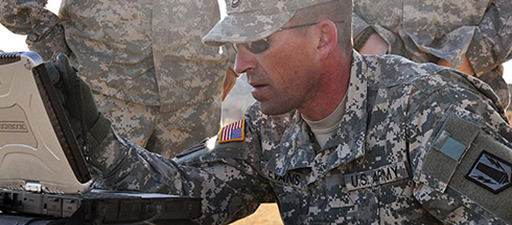Powering a Connected Future for Military Satellite Communications
In 2018, Hughes announced it was awarded a follow-on contract to continue a pilot study program to assess the feasibility of interoperability across multiple satellite communication (SATCOM) systems for the Department of Defense (DoD). The newest study builds on the growing partnership with the DoD to assess what the ideal military SATCOM architecture would look like and how diverse systems could work together at the IP layer. Under this award, Hughes will develop a prototype Flexible Modem Interface (FMI) for military terminals to enable various military and commercial systems and services to interoperate in the field.
“Hughes is being asked to develop, produce, and deliver a hardware and architecture prototype solution to support interoperable SATCOM capabilities for the military, which will help fortify satellite communications in contested environments,” said Dr. Rajeev Gopal, senior technical director of Advanced Systems for Hughes. “We look forward to delivering a solution that will help increase the resiliency and interoperability of the various commercial systems, including over Geostationary Earth Orbit High-Throughput Satellites (GEO HTS), Low Earth Orbiting satellites (LEOs), and military SATCOM systems and services used by DoD.”

Military Satellite Communications Defense Department assigns Hughes a critical role in designing and prototyping flexible modem interface for future SATCOM operations Currently, systems operated by the military are closed, with limited interoperability. The planned assessment and prototype deliverables have the potential to create a more resilient, cost-effective, and flexible SATCOM architecture for DoD. The FMI prototype will fit within the context of a mission management architecture that supports wide-beam, spotbeam, and on board processing satellites, including new GEO HTS and LEO satellite constellations. Hughes will also look at DoD’s future needs and capabilities, evaluating a secure and affordable wideband communications architecture that can facilitate varied and redundant space and ground transports.
“The overall goal for Hughes is to help the Defense Department produce a solution that expands the capabilities of the U.S. government’s satellite communications.” said Rick Lober, vice president and general manager of Defense and Intelligence Systems at Hughes. “To do that, we will examine how to create an interoperable system that is flexible and resilient, allowing DoD’s various global applications to operate over its own satellite network as well as leveraging commercial satellites, management systems, gateways, waveforms, and modems for DoD terminals to increase mission assurance.”